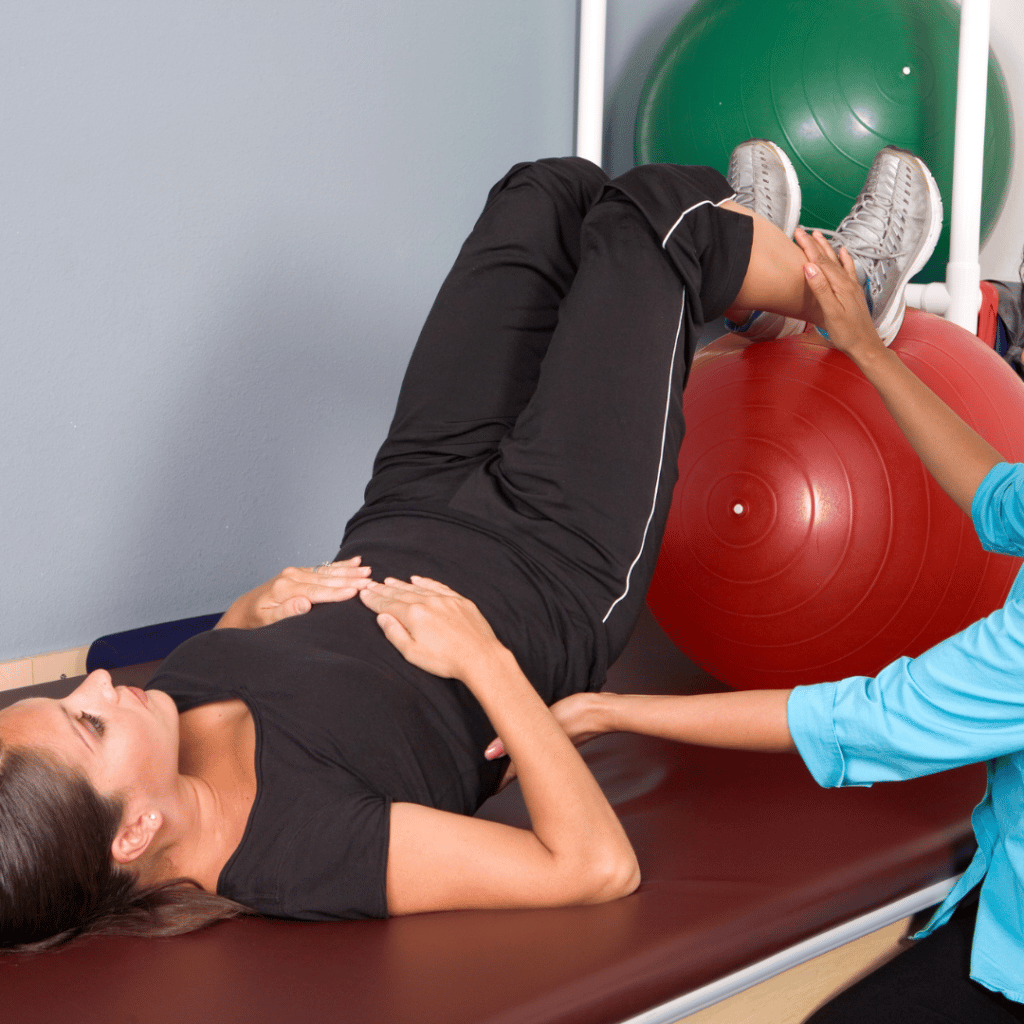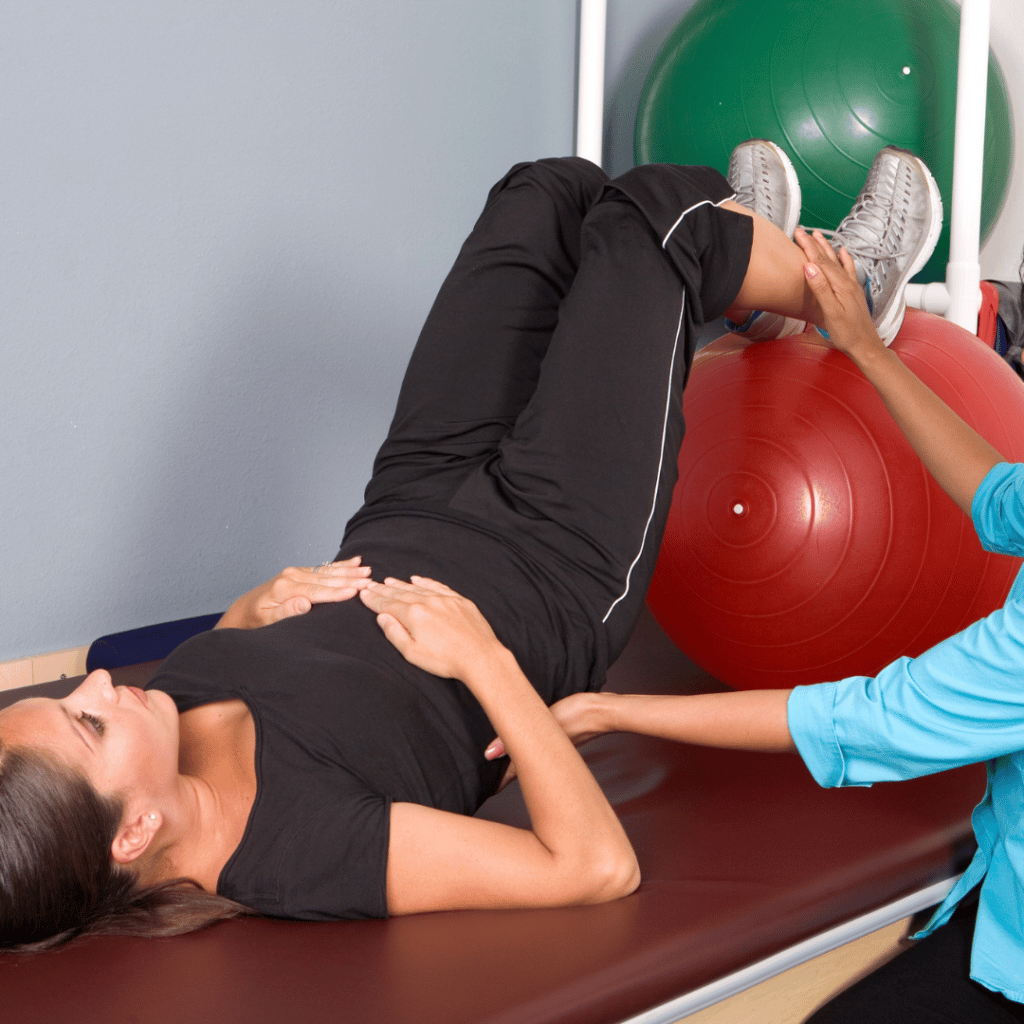
Many women think only a doctor can treat their pelvic problems. However, women’s health physical therapy offers specialized treatment for various disorders such as prolapse, diastasis recti, and more. Likewise, a therapist trained in pelvic floor physical therapy can help women and men with incontinence, pelvic pain, and sexual dysfunction.
1. Urinary Incontinence
Urinary incontinence (UI) can impact women of all ages, from teens to post-menopausal women. For example, adolescent female athletes in high-impact sports, such as gymnastics and track, have a higher prevalence of incontinence. UI also occurs later in life. So, many women experience urinary leakage following childbirth and after menopause. Fortunately, you can counteract UI with pelvic floor physical therapy.
2. Organ Prolapse
The pelvic floor muscles support pelvic organs such as the bladder and uterus. If these muscles become weak, or there is laxity in the supporting structures, the organs can drop down, bulge, or prolapse. Fortunately, prolapse is very treatable. A PT can teach you exercises to strengthen the pelvic floor. Early treatment can prevent invasive surgery down the road.
3. Pelvic and Vaginal Pain
Women can have many different types of pelvic pain. Some discomfort is associated with menstruation, infections, or pregnancy. However, other causes are musculoskeletal. For example, vaginal muscle spasms can lead to painful penetration. Pelvic floor physical therapy offers individualized treatment plans designed to help reduce pelvic pain.
4. Diastasis Recti Abdominis
Many women experience stretching of the abdominal muscles during pregnancy. This stretching may lead to what is called diastasis recti abdominis: the separation of the external abdominal (stomach) muscles. This is because the connective tissue between them stretches. Fortunately, strengthening and stabilizing your core muscles before, during, and after pregnancy can help!
5. Lower Back Pain
Pregnancy puts a lot of strain on the lower back. Before childbirth, the hormone relaxin softens the joints and ligaments. Additional weight may also aggravate the joints. Sacroiliac (SI) joint dysfunction causes pain in the lower back and buttocks. Physical therapy treatment can help strengthen the surrounding muscles and support the SI joint.
6. Postpartum Scar Restrictions
Cesarean and vaginal deliveries can leave behind scars. Following a c-section, some people experience discomfort along the scar tissue. Likewise, many women have tenderness from scar tissue left by episiotomies or natural tears. Therapy for postpartum scars involves soft tissue massage, scar mobilization, stretching, and strengthening of the surrounding muscles.
What does a women’s health physical therapist do?
PTs use evidence-based treatment for musculoskeletal disorders. They can help you reduce pain and return to your everyday quality of life. Treatment usually involves muscle exercises, manual therapy, and patient education.
Getting Treatment
Women’s health physical therapy is the first-line treatment for these conditions and is far less invasive than surgery. Our women’s health expert, Dr. Rachel Feldman, has extensive experience treating female-specific dysfunctions. Don’t live with pain and discomfort. Schedule an appointment online today.

